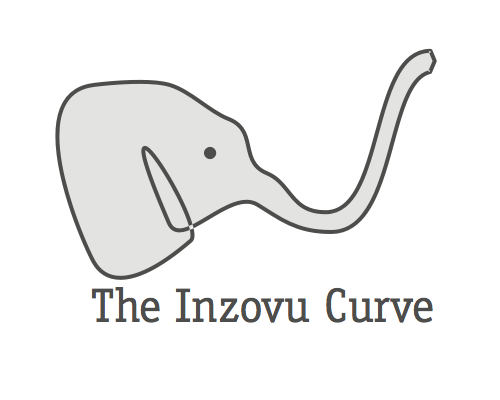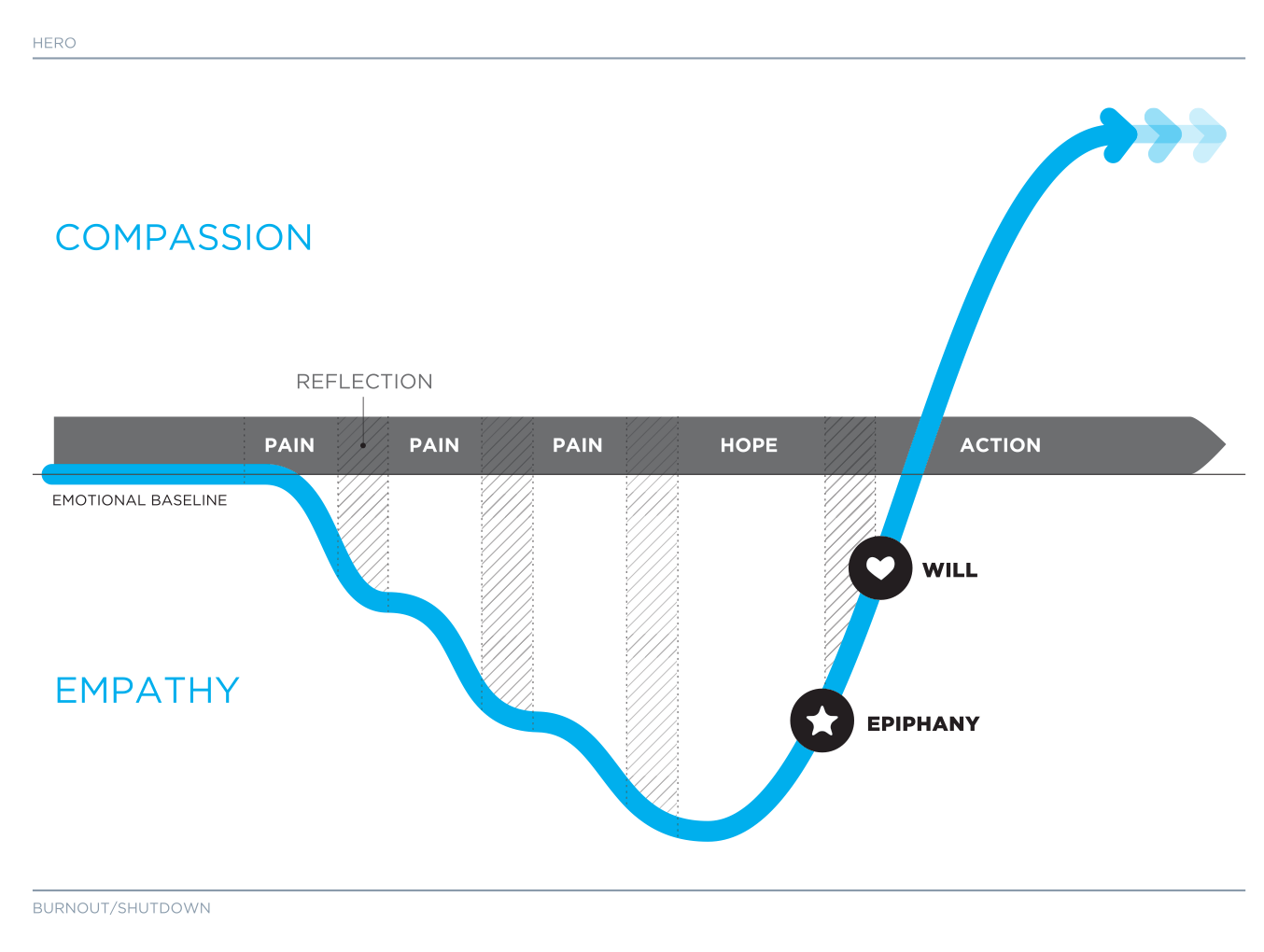The Inzovu Curve is a model that was shaped during UX for Good 2014, where I participated as a team captain. The model didn’t come from us directly: we extracted it from the best practices that Aegis Trust, The Kigali Genocide Memorial and other entrepreneurs in Kigali were doing already to heal the country. What we did was just a form of synthesis, to make possible to replicate it, both inside the organization and outside.

The Inzovu Curve maps the emotional journey of a person through a memorial in a way that’s meant to shift the individual from understanding to action. It’s a useful tool both in terms of assessment and design of the experience.

The curve itself shows the impact of the experience on the person while they go through the four stages. The stages are:
- Pain — in this stage the person sees what happened, and it’s meant to create the emotional response, connecting to the individuals and their stories. In the case of memorials, this is often a deep, painful reaction.
- Reflection — in this stage the person reaches a breathing space where reflection on what was just seen is possible. It’s a moment open for thinking, but also a way to not be overwhelmed by the emotions. As you can imagine, the first two stages are likely to alternate multiple times, creating a deeper and deeper connection.
- Hope — at some point in the experience it’s important to create the uplift, showing all the good things that happened within the tragedy. This can be done through examples of individuals that fought it, the good things that happened afterward, how people are again coming together to heal, and so on.
- Action — the last moment is a nudge for action. While hope raises the spirit and inspire, creating breathing space, action instead provides concrete ways the person can help and support the cause. Depending on the type of museum or experience, different things could be done, from very simple ones (a one off donation) to come complex ones (setting up a monthly discussion group in your hometown).
Now you notice in the diagram a vertical axis between empathy and compassion. That in a sense maps the emotional response, so going down means being more internally focused and feeling deeper emotions, while going up is opening and outward going. That axis is based on the studies by Tania Singer, which found a distinction using fMRI between empathy and compassion.
Compassion is a feeling of pity or a warm, caring emotion that does not involve feeling, say, sadness if the other person is sad.
O. Solon (2012) Compassion over empathy could help prevent emotional burnout
That’s why reflection moments are so important: they provide the space needed to avoid the bottom side of the empathy diagram: either burning out (suffering too much from what happened) or shutdown (disconnecting entirely from what happened).
In the upward curve there are also two topical moments that the four stages are meant to trigger, even if it’s difficult to define when they will happen. Sometimes a person goes through the museum multiple times before anything happens, some other time just once).
- Epiphany — it’s the moment when the experience gets connected to the person’s own life. The things described in the museum aren’t far away anymore. It’s feeling it could be you in their place. It could happen in your hometown.
- Will — it’s the second moment, happening after epiphany, where the person find a motivation and a desire to do something about it. That’s the key trigger for the following action, something that, once happens, doesn’t go away anymore.
Reception
When we presented the Inzovu Curve during MuseumNext we had an overwhelmingly positive reaction. While we knew there were good elements in it, we were surprised how well it resonated as-is, to all the people in the workshop.
Two quotes:
My personal highlight of the whole conference was participating in the Inzovu Curve Workshop led by the folks at UX for Good.
C. Brown, Exhibition Designer #
I have this impression that this kind of approach can be applied to any project that we can work on.
A. Tocmacov on The Museum Life Podcast by C. Bossert (@44:30)
So we feel that the model is underlying something really effective that can help in designing many kinds of experiences.
To learn more:
- Inzovu Curve website
- UX for Good
- The Inzovu Curve booklet PDF